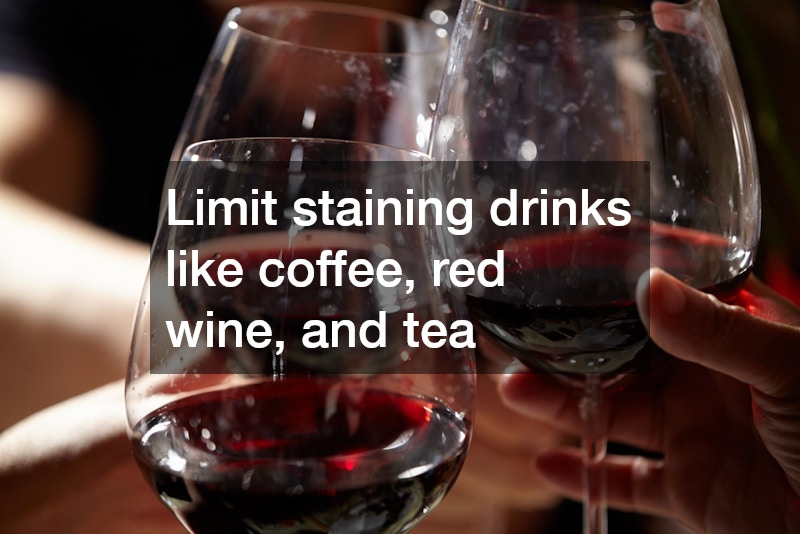
-
Traditional porcelain veneers placed by veneers specialists typically last 10–15 years or more with excellent care.
-
One-visit veneers offer immediate results in a single appointment, with an average lifespan of 7–10 years.
-
Daily brushing, flossing, and non-abrasive toothpaste help protect both types of veneers from premature wear.
-
Avoiding habits like teeth grinding, nail-biting, or chewing hard objects significantly extends veneer life.
-
Patients with busy schedules may benefit most from one-visit veneers, while those seeking long-term durability may prefer traditional veneers.
-
Advances in CAD/CAM technology and ceramic materials are steadily improving the performance of one-visit veneers.
-
Consulting experienced veneers specialists ensures proper placement, personalized recommendations, and long-lasting results.

Veneers have long been one of the most popular cosmetic dentistry solutions for patients who want to improve their smile. They correct common issues such as stains, chips, uneven enamel, and minor gaps. Traditionally, porcelain veneers placed over several appointments have been the standard, prized for their aesthetics and durability.
Recently, one-visit veneers have gained traction. Using CAD/CAM technology, these veneers are scanned, designed, and milled in a single appointment, allowing patients to walk out with a transformed smile the same day. The question many patients ask, however, is whether one-visit veneers last as long as traditional porcelain veneers. The answer depends on material, placement technique, and the care patients provide after treatment.
What Veneers Are and Why Patients Choose Them
Veneers are thin shells bonded to the front of teeth, designed to mimic the look and feel of natural enamel. Patients often choose veneers when:
-
Teeth are permanently discolored or resistant to whitening treatments
-
Enamel is chipped, cracked, or uneven
-
Small gaps or minor misalignments create aesthetic concerns
-
Teeth are undersized or irregularly shaped
Veneers specialists often stress that the greatest benefit of veneers is their ability to provide dramatic, natural-looking results while preserving most of the natural tooth structure.
Types of Veneers
While the concept is the same, not all veneers are created equal.
Traditional Porcelain Veneers
-
Made in a dental laboratory after impressions are taken
-
Require multiple visits and temporary veneers during fabrication
-
Highly customizable in shade and shape
-
Known to last 10–15 years or longer
Composite Veneers
-
Built directly on the tooth using resin
-
Faster and more affordable, but less durable
-
More prone to staining and wear, lasting about 4–7 years
One-Visit Veneers
-
Designed and milled using CAD/CAM technology during a single appointment
-
Bonded immediately, eliminating the need for temporaries
-
Made from strong ceramic blocks but with less layering than porcelain
-
Typically last 7–10 years, with newer materials improving durability
How the Process Differs
Traditional porcelain veneers involve a multi-step approach: enamel preparation, impressions, temporary veneers, and lab fabrication. The wait can take one to three weeks before the final veneers are bonded.
One-visit veneers condense this process. A digital scanner captures the teeth, a veneers specialist designs the veneers on a computer, and an in-office milling machine carves them from ceramic blocks. The patient leaves with permanent veneers in just a few hours.
The main tradeoff: laboratory-crafted porcelain veneers can achieve slightly more lifelike translucency and fine detail, while one-visit veneers prioritize speed and convenience.
Longevity: Comparing Traditional and One-Visit Veneers
Durability is one of the biggest considerations when choosing veneers.
-
Traditional Porcelain Veneers: Studies show survival rates of over 90% after 10 years, with many lasting 15–20 years. Their layered porcelain resists wear and staining exceptionally well.
-
One-Visit Veneers: On average, they last 7–10 years. While CAD/CAM ceramics are improving, they don’t yet match the longest-lasting porcelain veneers. However, for many patients, a decade of use is sufficient.
Veneers specialists emphasize that while material matters, patient habits and care often make the bigger difference in how long veneers truly last.
What Affects Veneer Durability
Several factors determine whether veneers reach or exceed their expected lifespan:
-
Material quality: Porcelain resists stains and wear better than resin; modern CAD/CAM ceramics are improving in strength.
-
Bonding technique: Proper preparation and adhesive application are critical.
-
Patient habits: Nail-biting, chewing ice, or using teeth as tools increases risk of chips.
-
Bruxism (teeth grinding): Adds stress that can crack veneers if a night guard isn’t used.
-
Oral hygiene: Neglecting brushing or flossing can lead to decay around veneer edges.
-
Regular checkups: Dentists can spot early signs of loosening, wear, or gum issues before they worsen.
Caring for Veneers to Extend Their Life
Veneers can only last as long as the care patients put into them. Daily maintenance and smart habits are essential.
Everyday Care
-
Brush twice a day with a soft-bristled brush and non-abrasive toothpaste
-
Floss daily to prevent plaque at the gumline
-
Rinse with fluoride mouthwash if recommended by your dentist
Lifestyle Choices
-
Limit staining drinks like coffee, red wine, and tea
-
Avoid chewing on hard foods or objects
-
Wear a night guard if prone to grinding or clenching
Professional Maintenance
-
Visit a veneers specialist every six months for cleaning and checkups
-
Ask for professional polishing to maintain shine
-
Address small chips or cracks quickly to prevent further damage
With these steps, patients often extend the lifespan of both porcelain and one-visit veneers beyond their expected averages.

Pros and Cons of Each Option
One-Visit Veneers
-
Pros: completed in one appointment, cost savings, no temporaries needed
-
Cons: slightly less durable, fewer customization options compared to lab-made veneers
Traditional Veneers
-
Pros: unmatched aesthetics, proven longevity, high stain resistance
-
Cons: higher cost, multiple visits required, temporary veneers in the meantime
The decision often comes down to a patient’s priorities: speed and convenience versus long-term durability and artistry.
Who Benefits Most from Each
One-visit veneers are ideal for:
-
Patients with busy schedules who want fast results
-
Those needing minor cosmetic corrections
-
Patients who want a more affordable alternative to traditional veneers
Traditional porcelain veneers are better suited for:
-
Patients seeking maximum longevity
-
Those requiring a full smile makeover
-
People who prioritize the most natural, customized look possible
The Future of Veneers
Cosmetic dentistry continues to evolve. CAD/CAM ceramics are getting stronger and more lifelike, narrowing the gap with porcelain. Researchers are also developing hybrid ceramics that combine the strength of porcelain with the convenience of same-day milling. Veneers specialists predict that in the near future, patients won’t have to choose between speed and durability—they’ll be able to have both.
Veneers remain one of the best ways to achieve a confident smile. Traditional porcelain veneers generally last longer, often 10–15 years or more, while one-visit veneers provide 7–10 years of reliable use with the benefit of same-day placement. Both require excellent oral care and regular visits to veneers specialists to reach their full potential.
The choice depends on patient priorities: whether immediate convenience or maximum durability matters more. With proper care and the expertise of skilled specialists, either option can deliver a smile that lasts and looks natural for many years.
